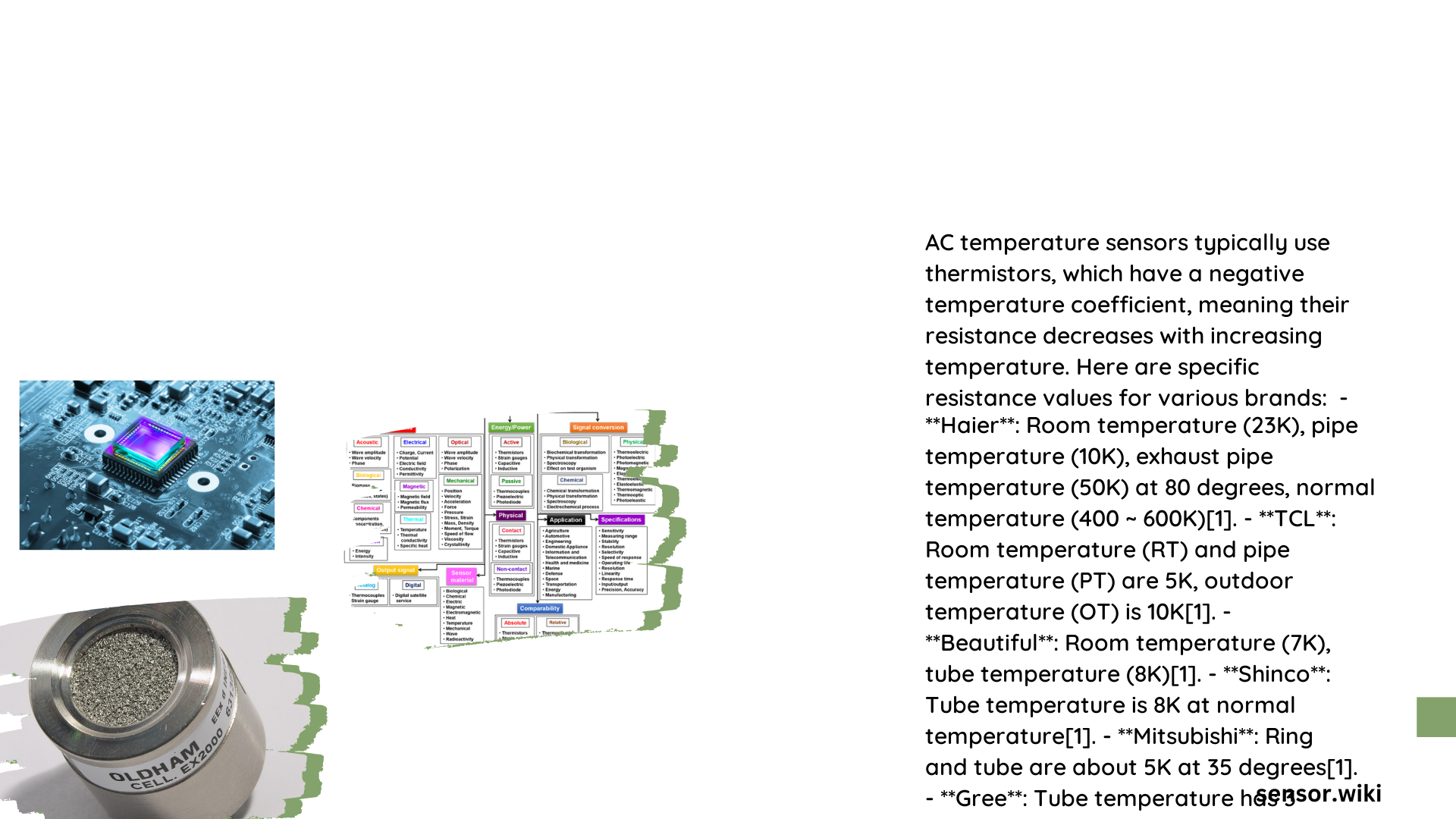AC temperature sensor resistance represents a critical parameter in understanding and maintaining precise thermal control systems. These specialized sensors convert temperature variations into electrical resistance signals, enabling accurate monitoring and regulation of air conditioning environments. By measuring resistance changes across different temperature ranges, technicians and engineers can diagnose system performance, detect potential malfunctions, and ensure optimal operational efficiency.
What Makes AC Temperature Sensor Resistance Crucial?
AC temperature sensor resistance serves as a fundamental diagnostic tool in heating, ventilation, and air conditioning (HVAC) systems. The resistance values provide critical insights into temperature variations, enabling precise environmental control and system performance evaluation.
How Do Temperature Sensors Measure Resistance?
Temperature sensors utilize thermistor technology to convert temperature changes into corresponding resistance measurements. The fundamental principles include:
- Resistance-Temperature Relationship: As temperature increases, resistance typically decreases
- Precision Measurement: Utilizing specialized circuits and calibration techniques
- Material Composition: Typically constructed from semiconductor materials
| Sensor Type | Resistance Range | Temperature Sensitivity |
|---|---|---|
| 10K Thermistor | 3.5K Ω – 33.5K Ω | High |
| Haier Sensor | 400-600K Ω | Moderate |
| TCL Sensor | 5K Ω – 10K Ω | Moderate |
What Are Standard Resistance Values?
Different manufacturers provide unique resistance specifications:
- Haier Air Conditioner
- Room temperature: 23K Ω at 25°C
-
Normal temperature range: 400-600K Ω
-
TCL Air Conditioner
- Room Temperature: 5K Ω
- Pipe Temperature: 5K Ω
-
Outdoor Temperature: 10K Ω
-
Gree Air Conditioner
- Tube temperature variations: 5K Ω, 10K Ω, 15K Ω
How to Calibrate AC Temperature Sensor Resistance?
Calibration ensures accurate temperature measurements through:
- Precision Equipment
- Multimeter
- Temperature-controlled environment
-
Reference thermometer
-
Calibration Process
- Set precise temperature points
- Compare sensor readings
- Adjust for deviation
- Verify tolerance levels (±1% to ±5%)
What Causes Resistance Measurement Errors?
Potential resistance measurement challenges include:
- Physical sensor damage
- Environmental interference
- Improper installation
- Long-term resistance drift
- Electrical circuit inconsistencies
Recommended Measurement Techniques
- Direct Resistance Measurement
- Use calibrated multimeter
- Isolate sensor from external circuits
-
Take multiple readings
-
Voltage Division Method
- Implement precision voltage divider
- Use microcontroller for data conversion
- Apply low-pass filtering techniques
Troubleshooting Strategies
- Conduct visual sensor inspection
- Perform resistance value comparison
- Test sensor responsiveness
- Replace if significant deviation detected
Conclusion

AC temperature sensor resistance represents a sophisticated mechanism for thermal system monitoring. Understanding its principles, measurement techniques, and potential challenges enables effective HVAC performance optimization.
